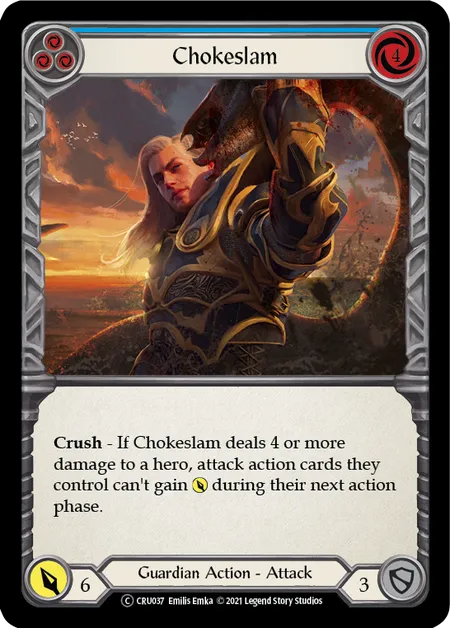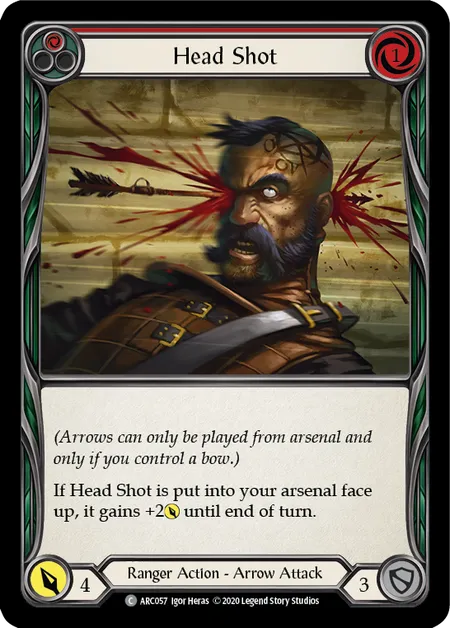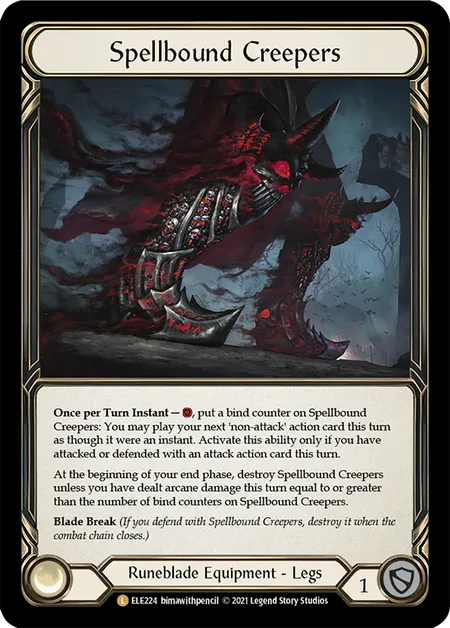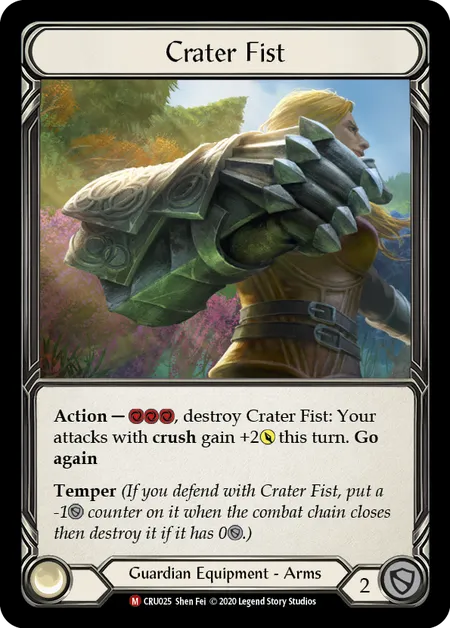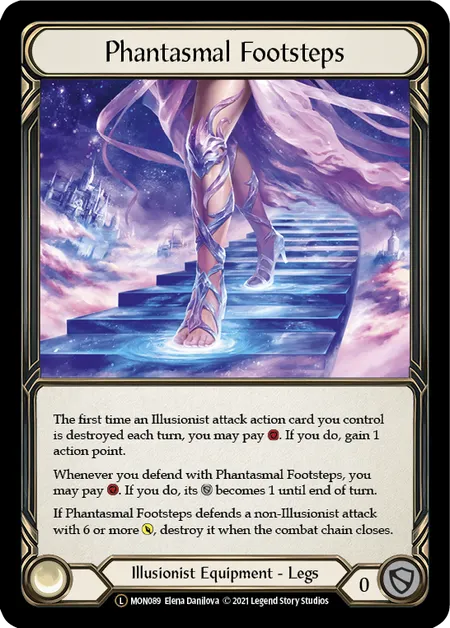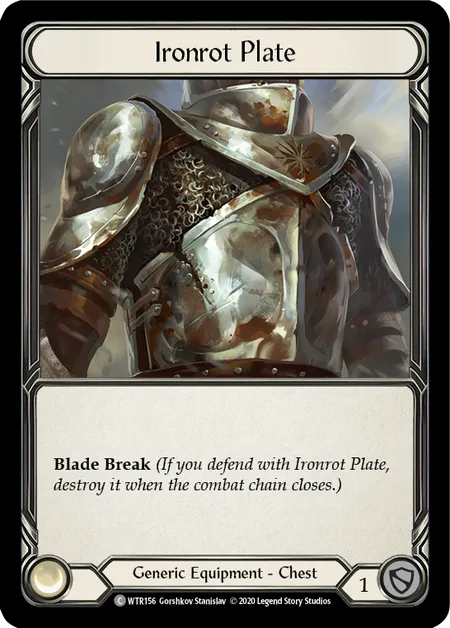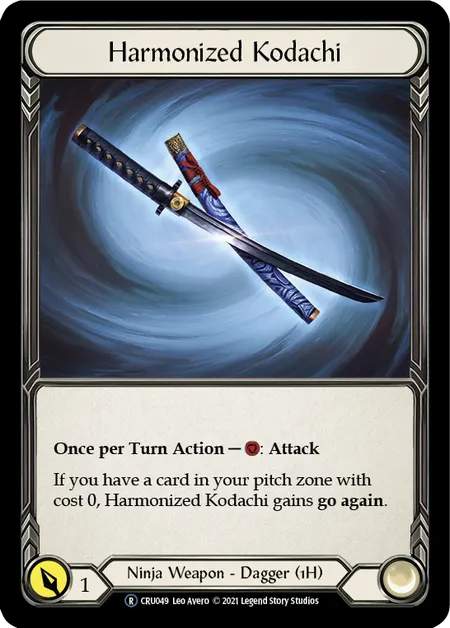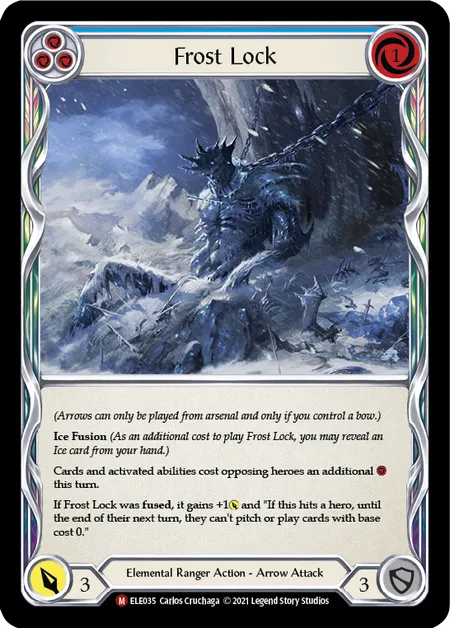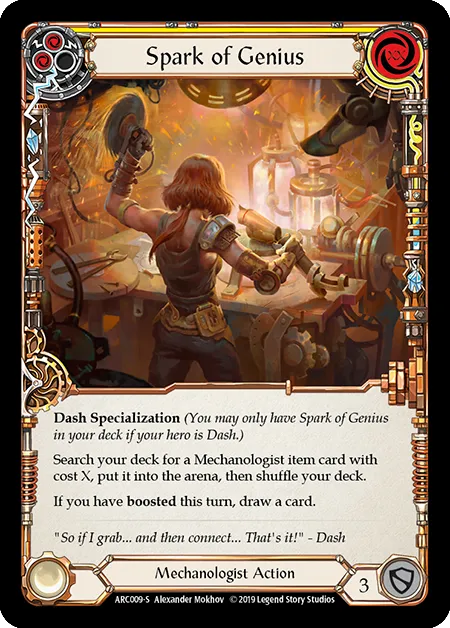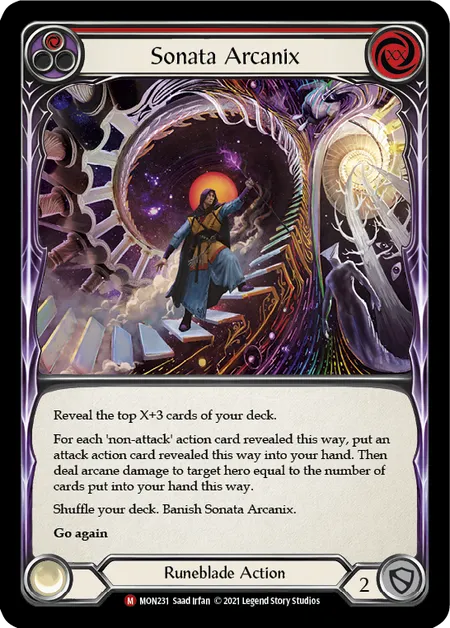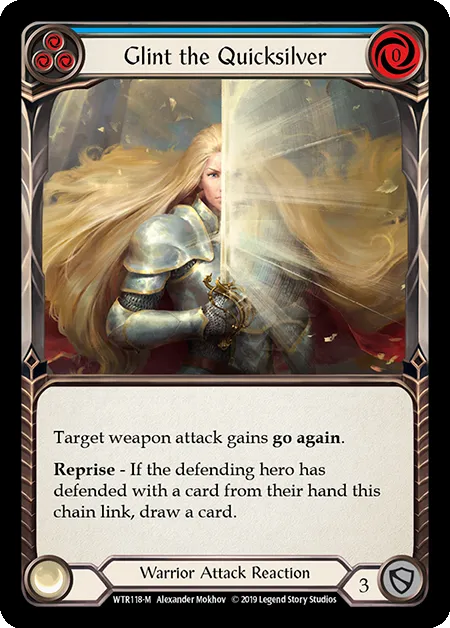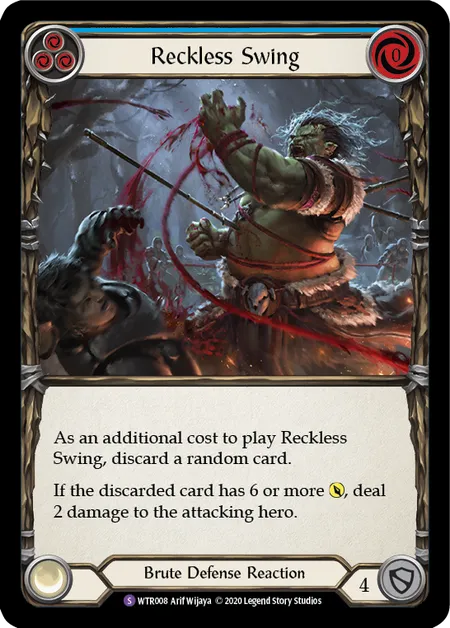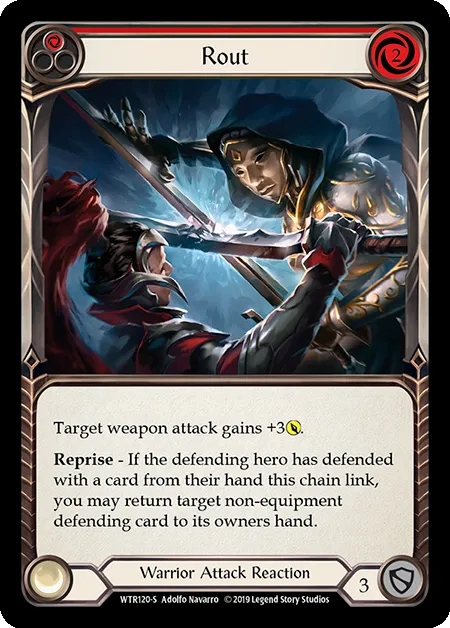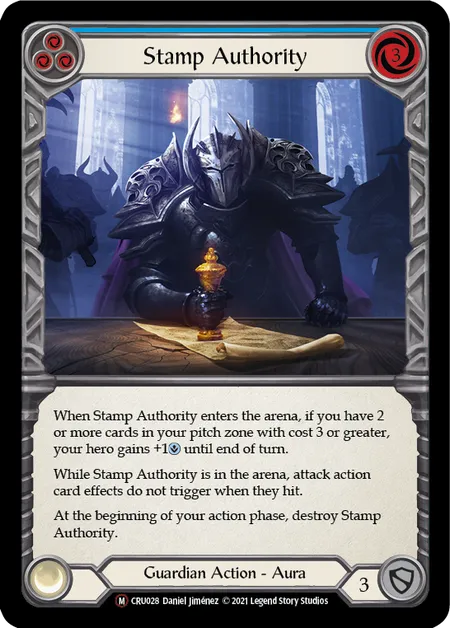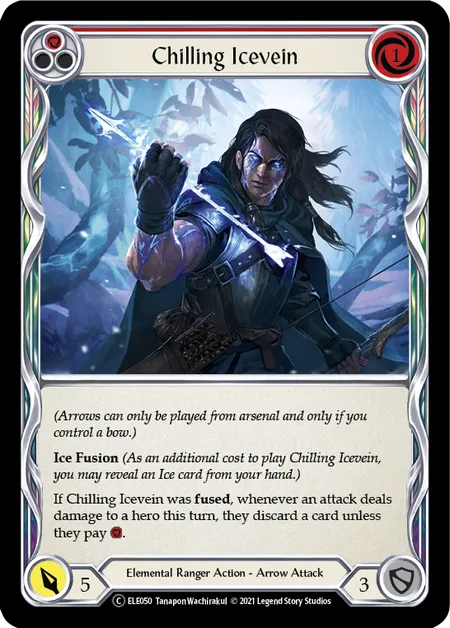Foreword
From 14 March 2022 the Comprehensive Rules v2.0 will take effect. In preparation for this we have released a preview of the updated rules ahead of time so that players and judges have time to familiarize themselves with the new document ahead of the rules coming into force. We would like to remind everyone that the current season of ProQuest is being played under the Comprehensive Rules v1.5, and the new rules will not come into effect until the ProQuest season has concluded.
With the arrival of the Comprehensive Rules 2.0, there are also changes to some cards and their interactions within the game. This week, we are touching on the most relevant and significant changes to cards for the typical player. Please note that some of these changes are in opposition to previous rules reprise articles and release notes, which will be updated to reflect the changes made in the CR2.0.
Each point here is made with the TL;DR first, then example(s), then a technical discussion. The technical discussion is based on the language used in the Comprehensive Rules 2.0 and is not typical language that is used within the game. Two specific cards have not been mentioned here and will receive their own article in the coming weeks: Korshem, Crossroads of the Elements and Mutated Mass; as well as some other minor interactions that typically do not occur in competitive play.
Snag and Chokeslam apply retroactively
TL;DR Snag and Chokeslam now retroactively cancel effects that were applied before Snag resolves, or Chokeslam would apply.
Example 1: Tyler has less life total than Perry. Tyler attacks Perry with Adrenaline Rush (red), which gains 3{p} from its own effect for a total of 7{p}. During the reaction step, Perry plays and resolves Sink Below (red), putting a card at the bottom of the deck and drawing a Snag. Perry plays and resolves Snag, which reduces the power of Adrenaline Rush to 4{p} , because Snag prevents it from gaining power from its own effect (including retroactively).
Example 2: Tyler was crushed by Chokeslam last turn. Tyler activates and resolves Red Liner putting a Head Shot (red) into arsenal, and Head Shot’s effect triggers gaining it +2{p}. When Tyler plays the Head Shot from arsenal, it goes onto the stack under Tyler’s control, and has its power reduced to 4{p}, because Chokeslam’s crush effect prevents it from gaining power from its own effect (including retroactively).
The staging system in the CR2.0 applies continuous effects (that apply to the power of a card) in a given order (simplified for brevity):
- Effects that prevent changes are applied (Snag, Chokeslam)
- Effects that set values are applied
- Effects that increase values are applied (Adrenaline Rush, Head Shot)
- Effects that decrease values are applied
Based on this system, “when the effect was generated” or “when the effect began to apply to the object” (the timestamp of the effect) is largely irrelevant compared to how the effect modifies the object. This pattern of effect application was designed to avoid burdening the players with tracking the timestamps of effects in addition to the effects themselves. As a result, it does not matter when you play Snag or when Chokeslam’s effect begins to apply to an object, all that matters is what effects currently apply to an object in order to work out how they interact. In this case, the prevention of changes (specifically the increasing of the power property) is always applied before the changes themselves.
Flicker Wisp’s damage increases before prevention is applied on the opponent’s turn
TL;DR Flicker Wisp (when fused) typically deals 2 damage before prevention effects are applied when played on the opponent's turn.
Example: Tyler attacks Perry and Perry defends with an attack action card. Perry then activates and resolves Spellbound Creepers, then plays Flicker Wisp, fusing a lightning card, and targeting Tyler. When Flicker Wisp resolves, it would deal 1 arcane damage, which is increased to 2 arcane damage from its own replacement effect. Now, Tyler may apply their prevention effects on the event of 2 arcane damage.
Replacement effects are now categorized and most fall into 2 categories: standard-replacement effects and prevention effects. Each category of replacement effect is applied before the next, and the turn player decides which player applies their replacement effects first within each category. All standard-replacement effects are applied before any prevention effects are applied, and because the increase to arcane damage is categorized as a standard-replacement effect, it will ensure that the damage of Flicker Wisp will increase to 2, before the opponent can prevent any damage.
Blazing Aether and Scour are not affected by Crucible of Aetherweave-like effects when they would deal 0 damage
TL;DR Wizard replacement effects that state “The next card you play this turn with an effect that deals arcane damage, instead deals that much arcane damage plus N.”, are applied during the event of arcane damage. When a card, such as Blazing Aether or Scour, would deal 0 damage, the damage event does not occur and is not increased by the replacement effect.
Example: Tyler activates and resolves Crucible of Aetherweave, then plays and resolves Blazing Aether targeting Perry. Tyler has done 0 arcane damage this turn, so Blazing Aether’s effect that deals damage does not produce a damage event that can be modified by Crucible of Aetherweave’s effect, therefore no damage is dealt. Tyler then plays and resolves Zap as an instant, targeting Perry. Crucible of Aetherweave’s replacement effect does not apply to Zap, because Blazing Aether was the first card with an effect that deals arcane damage played after Crucible of Aetherweave was activated.
Wizard replacement effects were previously ruled in a way that stopped prevention effects from applying before the increase to arcane damage. In order to do this under the Comprehensive Rules 1.X, these replacement effects were interpreted and ruled to replace the “play” event which changed the card text. However, with the change in how the order of replacement effects are applied, specifically with prevention effects being applied last, these Wizard replacement effects are now ruled as typical standard-replacement effects that apply on the event of damage before it occurs. As a result, events that deal 0 damage are not considered as events that deal damage, and therefore can not be replaced by effects that increase arcane damage being dealt. This specifically applies to Blazing Aether when 0 arcane damage has been dealt that turn, and Scour when 0 target auras are destroyed as part of its preceding effect.
Wizard replacement effects retain their previous interaction regarding what card the effect is applied to - it is consumed by the playing of a card that deals arcane damage as opposed to the resolution of a card that deals arcane damage. This means that even if you play multiple cards that deal arcane damage at instant speed on the stack, the effect will only apply to the first of those played, and then only increase the damage if the event will actually occur (i.e. if it deals 1 or more arcane damage).
Battleworn, Blade Break, Temper, Zephyr Needle, Phantasmal Footsteps only trigger when the combat chain closes
TL;DR Battleworn, Blade Break, Temper, Zephyr Needle, and Phantasmal Footsteps now ONLY trigger when the combat chain closes.
Example 1: Tyler attacks Perry with Zephyr Needle. During the defend step, Perry defends with a 3 defense card. Zephyr Needle does not trigger at this point in the game. During the reaction step, Tyler plays and resolves Razor Reflex to increase Zephyr Needle’s power to 5{p}. When the combat chain closes, Zephyr Needle triggers, but it is not destroyed because there are no defending cards with higher defense {d} than its current power {p}.
Example 2: Tyler attacks Perry with a 5{p} attack action card (chain link 1). During the defend step, Perry defends with Phantasmal Footsteps and pays the cost to set its defense to 1{d}. Phantasmal Footsteps does not trigger at this point in the game. Chain link 1 resolves and Tyler attacks Perry again. Tyler plays and resolves Art of War, increasing the power of the first attack (chain link 1) to 6{p}. When the combat chain closes, Phantasmal Footsteps triggers and is destroyed because it is currently defending a card with 6 or more power {p}.
Until recently, “if” has been used as both an indicator of a triggered effect condition, and a conditional effect. The CR2.0 has distinctly separated out triggered effects with their own syntax, but Battleworn and Blade Break’s original use of the term “if” provided an ambiguous context to interpret; it could either be a triggered effect that triggers on the event of defending, and produces a delayed triggered effect that triggers when the combat chain closes; or it could be a triggered effect that triggers when the combat chain closes and has an effect that is conditional on it having defended. To address this, the CR2.0 has committed to the latter, where Battleworn, Blade Break, Temper now only trigger when the combat chain closes.
As such, effects that were originally modeled using this template will also be interpreted using the same logic, and will likely receive a non-functional errata to increase comprehension in any future printings. In particular Zephyr Needle and Phantasmal Footsteps now both trigger and then check the condition of the effect on the closing of the combat chain, and no sooner. In this way, their effects can be read as the following:
- When the combat chain closes, if Zephyr Needle is defended by a card with {d} greater than Zephyr Needle's {p}, destroy Zephyr Needle.
- When the combat chain closes, if Phantasmal Footsteps defends a non-Illusionist attack with 6 or more {p}, destroy Phantasmal Footsteps.
Cards such as Soul Shield and cards with Phantasm are not affected by this change.
Find Center can now be defended by equipment
TL;DR Find Center (with combo) can now be defended by equipment (and other cards with a defense property but no cost property).
Example: The last attack on the combat chain is Crane Dance. Tyler attacks Perry with Find Center. During the defend step, Perry legally declares Ironrot Helm and Lord Sutcliffe as defending cards.
The ruling for Find Center stems from how to interpret effects that look at the values of properties for objects without those properties. In general, objects without a specified property can not be used to satisfy the condition (e.g. Heart of Fyendal can not be considered a 0 cost card for the purposes of Harmonized Kodachi). However, there are some effects that simply require the existence of a specific property in order to function correctly, such as when the effect requires a calculation, or it assumes a specified object has the property (e.g. Ravenous Rabble requires the pitch value of a card, and uses 0 as a default). The latter is similar to how Last Known Information is used for objects that no longer exist.
Find Center is the sole outlier where the card text is in direct conflict with the ruling consistent for all other cards; it does not require the value of the object as part of a calculation, nor specify an object to assume the value of its property. In order to retain existing functionality with the majority of cards and provide a consistent basis for the interpretation of card text, Find Center will not receive a functional errata and is instead re-ruled to be able to be defended by equipment (and other cards with no cost property, such as mentors).
Frost Lock and Lead the Charge check X cost cards after X is declared
TL;DR Frost Lock prevents cards with cost X from being played when X=0, but not when X>0. Frost Lock still prevents cards with cost X from being pitched. Lead the Charge works based on the value declared for X.
Example: Tyler plays and resolves Lead the Charge (blue), and then plays Spark of Genius, with X=1. The printed cost of Spark of Genius is XX, therefore Spark of Genius is played as though it has a cost of 2 which triggers the Lead the Charge effect and gains Tyler 1 action point.
Example: Tyler was hit by Frost Lock (fused) last turn. Tyler declares Sonata Arcanix with X=1. The printed cost of Sonata Arcarnix is XX, therefore Sonata Arcanix is played as though it had a cost of 2, which is not illegal under Frost Lock’s effect. Tyler can still not pitch a card like Sonata Arcanix though, as without X being declared, the cost is evaluated to be 0.
The value of X is considered to be 0 only when it is not determined. For the purposes of costs, the value of X is determined when the card is declared to be played and before the costs are paid. Frost Lock’s effect is specifically checked at the point after the parameters of the card have been declared (including the value of X for the cost). This ensures that all the unknowns (mode, targets, costs) have been established before the legality of the play as a whole is evaluated. In addition, triggered and conditional effects like those from Lead the Charge, see the card played with the parameters declared, which defines the value of the cost for the purposes of these effects. When pitching, defending, or anything other than playing the card, the value of X (for cost) is undetermined and thus is considered to be 0.
Flic Flak doesn’t stack and Glint vs Reckless Swing/Steelblade Shunt
TL;DR If you play Flic Flak, then you play another Flic Flak before it resolves, the next card with combo that you defend with later in the turn will now only gain +2{d}, not +4{d}.
TL;DR If reprise isn’t active, your opponent plays a defense reaction, and you play a Glint the Quicksilver before the defense reaction resolves, reprise will not be active and Glint the Quicksilver will not draw you a card.
Example 1: Tyler attacks Perry with an attack with go again. During the reaction step, Perry plays Flic Flak (layer 1), and before passing priority plays another Flic Flak (layer 2). The chain link resolves and Tyler attacks Perry again. Perry defends with a card with combo, and it gains just +2{d} from Flic Flak’s effect.
Example 2: Tyler attacks Perry with a weapon. During the reaction step, Perry plays Steelblade Shunt from hand (layer 1), which will deal lethal damage to Tyler when it resolves. Tyler plays and resolves Glint the Quicksilver (layer 2), but does not draw a card because the reprise condition is not met. Steelblade Shunt resolves and Tyler takes 1 damage and loses the game.
Defense reactions were previously considered to defend (event) when they were played, and then become defending (state) when they resolve as a layer on the stack. This is at odds with other aspects of the game including attacks (i.e. attack (event) and it becoming attacking (state) are simultaneous). The change in the CR2.0 remedies this by unifying “defend” and “defending” to be at the time the defense reaction resolves as a layer on the stack. This has two major consequences.
Flic Flak’s effect specifies that the next card you defend with gains the bonus if the condition is met. If you defend with a card, but the condition is not met, the effect is still “consumed” and does not carry over to the next card you defend with after that. With the change to the definition of defending for defense reactions, it is no longer possible to “stack” the bonuses from multiple Flic Flaks onto a single card. Playing two Flic Flaks (layer 1 and 2), and then resolving each of them in turn results in the layer 2 resolving first generating the effect; then layer 1 resolving, becoming a defending card, and consuming (and wasting) the effect of the Flic Flak on layer 2.
When a defense reaction is played, but remains unresolved on the chain, it does not count towards whether the condition for reprise effects is met. Specifically, when reprise is not active and the opponent plays a Reckless Swing or Steelblade Shunt from hand for potentially lethal damage, you can no longer play and resolve Glint the Quicksilver in response to draw a card to potentially save yourself. Because the defense reaction remains unresolved as you play Glint the Quicksilver, it is not considered to have defended and therefore the reprise condition is not met.
Ironsong Response and Rout have limitations on targeting
TL;DR Ironsong Response can only be played if you've attacked with a weapon (i.e. there’s a weapon attack to target), even if reprise is not active. Rout can only target a defending card when it is played, even if another defending card is added before it resolves.
Example 1: Tyler attacks Perry with an attack action card. Perry does not defend, and during the reaction step, Tyler can not play Ironsong Response. This is because there is no legal weapon attack to target, despite Ironsong Response having no effect if it is resolved without the reprise condition being met.
Example 2: Tyler attacks Perry with a weapon. Perry does not defend, and during the reaction step, Tyler plays Rout (layer 1). Before Rout resolves, Perry plays and resolves Unmovable (layer 2). When Rout resolves, the reprise condition is met, but no targets were selected when the card was played so Unmovable can not be retroactively targeted and sent back to hand.
In previous iterations of the rules, reprise has checked on the playing of the card, as opposed to its resolution, and stood out as an exception to how conditional effects are evaluated. To prevent this inconsistency, reprise conditionals are now evaluated on resolution to reflect how they are worded in the context of the CR2.0. In addition, the targeting of the reprise effects are also clarified to ensure consistency. Targets are always declared when the card is played, and unless the target is optional, the card must have a valid target to be played, even if the targeted effect is conditional on reprise. For Ironsong Response, this specifically means that it can not be played if there isn’t a weapon attack to target, even if the reprise condition is not met. You may still play Ironsong Response without the reprise condition, but it must be when the combat chain has an existing weapon attack to target. Rout is affected in a minor way, where the target of the defense reaction must be selected at the time the card is played, even if the reprise condition is met after it is played but before it has resolved. Because the targeted effect is optional, you do not have to declare a target if the reprise condition is not met.
IMPORTANT NOTE: Because the reprise condition now is officially checked on resolution of the layer, there may be complications when players argue that any responding defense reactions are played before their card resolves and therefore the reprise condition would be met when their card resolves. However, benefit of the doubt is given in any situation where it would be un-optimal to play a defense reaction that would allow the reprise condition to be met. In example 2, this is a purely hypothetical situation that shows the consequence of the rules change - in this example it would be ruled that Unmovable was played after Rout resolves to prevent cases of rules sharking and/or angling.
Stamp Authority now stops all attack action card triggered effects
TL;DR Stamp Authority stops the effects of Blizzard Bolt, Chilling Icevein, and Buzz Bolt from triggering when an attack deals damage as part of a hit (during the damage step).
Example: Stamp Authority is in the arena. Tyler attacks Perry with Blizzard Bolt, fusing an ice card. Perry does not defend or prevent any damage, and Blizzard Bolt hits. Blizzard Bolt’s effect does not trigger, and Perry does not gain a Frostbite token, due to Stamp Authority’s effect.
With the unification of triggered effects produced by both static and resolution abilities, Stamp Authority now works more intuitively and prevents delayed-triggered effects from triggering in the same vein as static-triggered effects. Delayed-triggered effects, such as those produced by Blizzard Bolt, are independent of the source that generated them, and exist until they are no longer relevant. This means that even if the combat chain is closed and Blizzard Bolt is put into the graveyard, the delayed-triggered effect continues to exist until the end of the turn and triggers whenever the condition is met.
The hit-event created when an attack has greater power than the sum total defense of the defending cards, is a composite event that contains the physical damage to be dealt to the target. This event (with the damage) is considered a hit, and Stamp Authority prevents triggered effects (of attack action cards) from triggering from this event, including effects that trigger from damage being dealt. Previously delayed-triggered effects were not considered effects of the attack action cards that produced them, but with the CR2.0 this is no longer the case. Due to how the source of abilities and effects are defined, the effects of the three elemental arrows are now considered by Stamp Authority’s effect.

